
Every so often we'll be watching YouTube or listening to a podcast and we'll come across someone using console generations as a way to describe a piece of video game hardware. These are terms, like "first generation" or "second generation", that aim to communicate roughly when a video game console was released, or what it was competing against on the market at the time, but they're often the source of controversy and debate online.
One reason for this is their questionable origins, with many believing that volunteers of the encyclopedia website Wikipedia simply made them up due to a lack of credible sourcing online. Others, meanwhile, have doubts about their accuracy as well as how many people are able to use them without needing to constantly refer back to the site in question.
It's something we've never personally thought about in the past, but over the last few months, Time Extension set out to find out more about where these console generations originally came from. We wanted to know more about their mysterious origins, the role that Wikipedia played in their adoption, and what people inside the industry actually think of them today. This had us speaking to a bunch of video game experts and digging through various magazine and newspaper archives.
The Search Begins...
If you visit Wikipedia today, what you'll find there looks something like the list you see below. The first generation of consoles is made up of the Magnavox Odyssey, Pong, and Coleco Telstar, with subsequent groups combining systems based on share criteria such as their release date, technology, and whether they were on the store shelves at the same time:
- First Generation (1972-1980) - Magnavox Odyssey, Pong, Coleco Telstar
- Second Generation (1976-1992) - Fairchild Channel F, Atari 2600, Mattel Intellivision, ColecoVision
- Third Generation (1983-2000) - NES, Master System, Atari 7800
- Fourth Generation (1987-2004) - PC Engine (TurboGrafx-16), Mega Drive/Genesis, Neo Geo, SNES
- Fifth Generation (1993-2006) - Nintendo 64, PlayStation, Sega Saturn, 3DO, Atari Jaguar
- Sixth Generation (1998-2013) - Dreamcast, PlayStation 2, GameCube, Xbox
- Seventh Generation (2005-2017) - Nintendo Wii, PlayStation 3, Xbox 360
- Eight Generation (2012-present) - PS4, Xbox One, Nintendo Switch, Wii U
- Ninth Generation (2020-present) - PS5, Xbox Series X and S
What's odd about these categories is that no one really knows who came up with them or their original source. We reached out to a bunch of historians, YouTubers, and journalists to see if they could reveal some previously hidden insight into when they first came into use, but pretty much straight away it became clear that, while most could identify Wikipedia as being responsible for their later popularity, no one could really pinpoint exactly how or when they appeared.
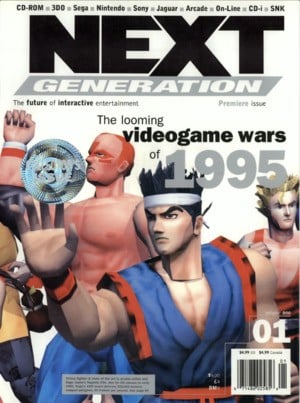
Kelsey Lewin, the co-director of the Video Game History Foundation, speculates they could have emerged from another term, which was popular in the early 90s: "Next Generation".
She tells us, "I know people have been saying the phrase ‘next generation’ for a while. At least going back to the 90s. It would be like, ‘This is the next generation, this is cutting edge, this is brand-new technology.’ So if I had to guess, it probably stems from that."
The senior gaming editor at Ars Technica, meanwhile, Kyle Orland couldn't recall anybody using numbered generations back when he was first playing video games in the 1980s. Instead, he remembers hearing about them for the first time while auditioning for a quiz show that was looking for video game experts in the mid-to-late 2000s.
Orland recalls, "One of [the questions in the audition] was something like ‘What was the best-selling console of the fifth console generation?’ I was like, ‘What?' [...] I was kind of flabbergasted about it. Until I looked it up and was like, ‘Oh Wikipedia has them.’ This was sometime in the aughts.”
The last person we contacted was the YouTuber Displaced Gamers, who put together a video essay entitled "Why use Generations to classify video game consoles?" in July 2020, but like Orland, he had also heard about them for the first time from reading Wikipedia at some point in the 2000s.
He says, "In 1999, I started collecting games for systems I had already experienced - Atari 2600, NES, SNES, Genesis, etc. I wanted to start filling in other gaps I had missed such as the TurboGrafx-16 and 3DO. Since I knew of them and not much about them save for commercials, ads, and playing store demos from when they were new, I just started searching to see what I could find on the web. That was when I first saw the numbered generations. It was on Wikipedia. Somewhere around 2001-2005."
From these conversations, it quickly became clear that no matter who we asked, no one could how exactly they started to appear, so we realized we needed to dig a little deeper. Determined to find an answer, we trawled through old newspaper and magazine archives for the earliest mentions of video game generations we could find, and what we discovered was fascinating. We were able to unearth several references to console generations dating all the way back to 1982 - 19 years before Wikipedia was ever established.
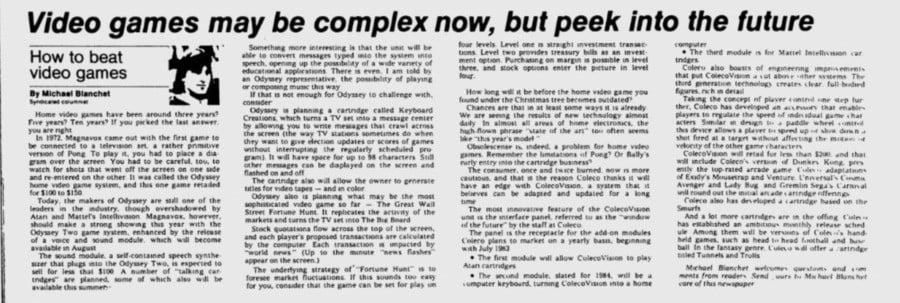
These terms weren't exactly common but occasionally showed up in articles hyping up the latest console release. The first instances of them we found, for example, appear in articles referencing the ColecoVision and the Atari 5200, with publications like The Telegraph Herald, Electronic Games, and Philadelphia Daily News calling these machines "third-generation" or "third-wave" devices. Interestingly, this seems to contradict how these consoles are categorized today on Wikipedia.
Why Generations?
Discovering these references threw up a few questions: had early console manufacturers adopted these terms willingly? Or were they simply the invention of journalists at the time trying to describe this new and growing industry? To find out, we spoke to Michael Katz, the former vice president of marketing at Coleco, and Mike Moone, the former president of consumer products at Atari. They were able to confirm to us that yes, both Atari and Coleco had used console generations when talking about their machines and also gave us a bit of background on where they might have pulled these phrases from.
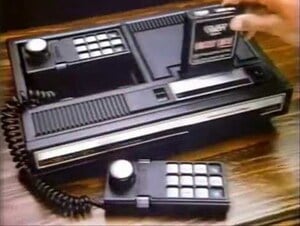
According to Katz, these phrases were borrowed from other consumer industries as a way to communicate technological innovation to a mainstream audience. By the early 80s, manufacturers had already applied "generations" to cars, aircraft, televisions, and computer parts. Video games seemed like the next logical step.
As Katz explains, "[Something being] third generation meant that it was more advanced. It offered more and better play value because the processor was more powerful. [It also meant that it had] better animation, sound effects, detail, and realism. Just like the technology of TVs or cars becoming more sophisticated."
Moone agrees with this definition. He similarly cited automobiles and consumer appliances as an inspiration. But this begs a question: if Coleco and Atari considered the ColecoVision and 5200 "third generation" devices, what exactly did they deem the first and second? Moone was able to help us out there.
"[At the time] we considered Pong a first-generation game because it was a dedicated piece of hardware/software and would only play Pong," he recalls. "The Atari 2600 was considered the second generation because it had a better processor than Pong and it was programmable with many different cartridges like Space Invaders, Asteroids, etc. When we launched the 5200, we referred to it as a third-generation console partly because it had a new processor vs. the 2600, but secondly, because the game cartridges themselves contained more memory."
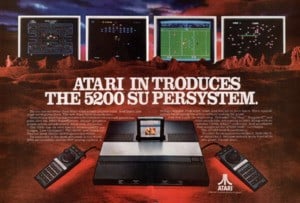
With a system of classifying consoles slowly starting to take shape, you might expect other hardware manufacturers to take note, but this isn't what happened at all.
Instead, seven years later, the co-founder of Sega David Rosen confusingly referred to his new 16-bit console, the Genesis, as the "third generation of video games", putting forward a new analysis of the industry.
Rosen told The Cincinnati Post's Gayle Harden Renfro:
"We like to think of it as the third generation of video games. We hold Nintendo, our competition in high esteem, but this does not mean we can't do one better."
This analysis positioned the Atari 5200 and the ColecoVision as the first generation of video game hardware, the Nintendo Entertainment System and the Master System as the second, and the Genesis as the third, totally upending the previous interpretation.
We couldn't find a contact for Rosen, so we instead tracked down the former group director of global marketing at Sega, Al Nilsen. Nilsen was able to tell us that Rosen's comment wasn't an official part of Sega's marketing strategy, but something that was occasionally brought up when talking with the press.
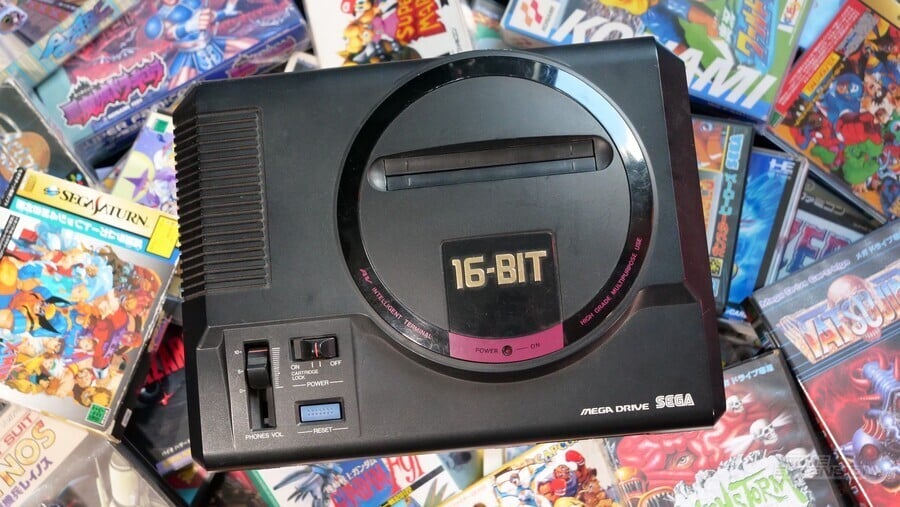
"It [...] worked well with journalists, analysts, and potential partners," Nilsen tells us. "Parents, on the other hand, responded more to what their kids asked for than if a system was part of 'the third generation' or not. And the kids themselves, they just wanted the best games and graphics."
Along with the Genesis, we also found references to the TurboGrafx-16 being considered part of this brand-new third generation in articles from the Philadelphia Daily News article and Dallas Morning News (both from June 1989). We contacted Ken Wirt, the former vice president of strategic planning at NEC, but he told us that he didn't remember the company ever using that specific phrase to describe the console.
What's clear from the above is that, though the language around console generations existed, there was no consensus between hardware manufacturers over how these terms should be applied. As a result, it was often far more common to hear consumers and the gaming press default to using bits or other methods to distinguish between the different generations of consoles at the time, rather than try and work out what system belonged where on a specific timeline. That's not to say some people didn't try and come up with their own interpretations.
Establishing The Timeline
Throughout the 1990s, an academic named Scott Gallagher claimed that they had identified six specific generations of technological innovation in the video game industry. His first paper on the subject was completed in 1990-1 for a business history class he was taking but he later revised it for a 1997 paper for The Texas Conference on Organizations on "First Mover Advantage" in the video games industry. Then in 2002, he revised it again for a paper for the IEEE (The Institute of Electrical and Electronics Engineers), written alongside Seung Ho Park, which they called "Innovation and competition in standard-based industries: A historical analysis of the U.S. home video game market".
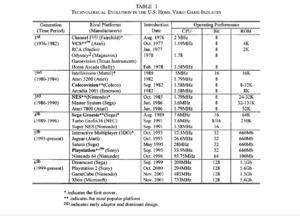
This paper examined "the competitive dynamics in a standard-based industry through a historical observation of the US home video game industry." A standard-based industry is defined in the paper as one that's considered different from traditional markets due to externalities, such as existing in a network or needing ancillary products (software and hardware) to reap the full benefit. In these types of industries, they argue that market share itself can become "a potentially valuable resource for firms", and so they set out to analyze what consoles were directly competitive and the effects these rivalries had.
As far as we could find, this was the most attempt from a third-party source to try and link the existing consoles together in one clear timetable and also bears a similarity to the system that appears today on Wikipedia, with only a few minor differences. Most notably, in the paper, Gallagher and Park position the Atari 2600 as a first-generation machine, as opposed to a second-generation one.
We emailed Gallagher, who now works at James Madison University in Virginia and he told us that, prior to his paper, he was unaware of any efforts to apply generations to video games. Nevertheless, it just seemed obvious to him that these different generations existed and that they could be easily defined. But what benefit does he believe can be gathered from grouping these consoles together in this way?
Well, as he explains, "For academics, generations are absolutely essential. Remember it wasn’t really until Betamax versus VHS that anyone thought seriously about network effects being so critical for markets and firm performance, though railroad (gauge), electrical (AC/DC), and telephone systems (regions) would have provided a lot of insights if anyone had bothered to look! But each of those is just ONE observation.
"By having multiple generations of video games, which because of limited backward compatibility often restart things at zero competitive advantage for each participant, it allows for multiple observations while holding the basics of the industry constant. This is actually a big deal for an academic because we are always trying to hold everything constant except for what we want to study."
Despite the novelty of their work, gamers largely ignored Gallagher and Park's efforts to create a historical analysis of the industry. But a more prominent source would soon come along to transform how we talk about games; we're talking, of course, about Wikipedia.
Wikipedia is a free online encyclopedia that started in 2001 where users can make or suggest edits for a bunch of pages based on a variety of topics; that includes video games.
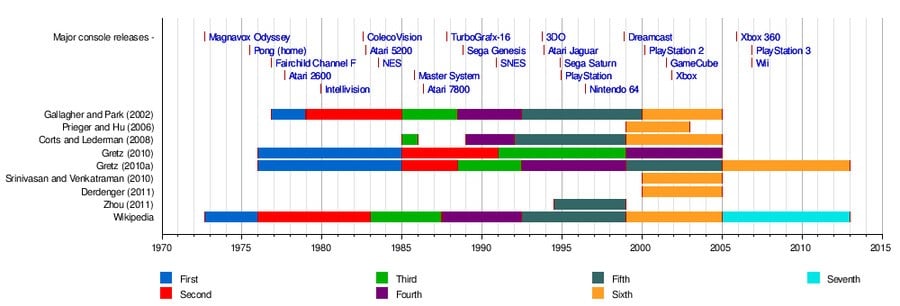
In Wikipedia's early days, volunteer editors started putting together articles based on gaming topics but soon ran into the problem of how they were going to categorize the history of video games. No one could really agree. So, as a result, editors suggested all kinds of methods, dividing consoles into groups based on their respective "bits", decades, or their proximity to key industry events. This seemed to last all the way up until 2005, which is when two random contributors proposed using "sixth generation" and "seventh generation" for the pages "History of video games" and "Home Video Game Console", and successfully introduced the concept of console generations into the mainstream.
Two years later, in 2007, another user renamed the rest of the subheadings in the section on the Home Video Console to retroactively fit into this developing system, but no source was ever given for any of these edits.
This didn't seem to matter though. Following these changes, we were able to observe a noticeable uptick in the number of published books and magazines referencing Wikipedia's classification system demonstrating that people viewed the site as an authoritative source in and of itself.
The Great Debate
It's this lack of sourcing has led to some lengthy debates between the website's editors over whether this system is actually fit for purpose. It's also why those writing about the games industry, particularly historians and journalists, disagree over their usefulness.
Kelsey Lewin, for instance, tweeted in April 2022 to voice her opposition to this system. She argued that she believed these specific generational splits were inaccurate and non-ubiquitous.
Lewin clarifies her objections, "I just don’t find them to be particularly useful ways of categorizing video game consoles, because you can poke one hundred holes in the groupings of each one of these generations.
"I mean, they tend to blur together anyway: a third-generation console might be on the market at the same time as a fourth-generation console and competing in that same market. There are consoles that are technologically far superior to the other consoles in their given generation, and maybe those don’t catch on as much but tech-wise they might be more similar to a console in a different generation, they just happened to come out in a different year range. So I don’t find them to be particularly useful ways of categorizing things. Or at the bare minimum, they can be a little misleading way of categorizing things."
Kyle Orland also has some issues with the current classification system. He argues that it is an oversimplified and idealized understanding of the way people play games.

"I get the desire," he tells us. "It’s kind of like human generations, you want to set a cut-off point to say these people grew up with similar things and they have the same cultural touchstones, and it’s kind of the same for consoles. These are about the same hardware level, people were considering whether to buy one console or the other, and that makes them a generation, but there are so many edge cases. People were buying the NES well into the 90s and the Wii got its last game when the PS4 was out. It kind of assumes a homogeneity of how people play games and when they played them that doesn’t always work when you actually talk to people about their memories."
It can be a divisive topic. When DisplacedGamers published his video criticizing the current system, for example, he noticed an extraordinarily strong reaction from viewers.
As DisplacedGamers explains, "I didn't expect the level of passion the comments reached nor the minor dip in subscriber count that I saw at the time. I had many people strongly agree with my dislike of how consoles were classified. I had many people strongly disagree. Some were insulting. A small number complained that while I had made points to discredit the current classification, I had failed to present a new system to replace it."
From speaking to people on various sides of the debate, it seems like the disagreements will likely continue raging until someone proposes a proper alternative. Until then, it's probably best just to acknowledge that they probably aren't as accurate or as authoritative as many people seem to make out.
So is Wikipedia really to blame for video game console generations? Well, it's sort of a yes and no situation. While console generations definitely existed before Wikipedia, appearing in newspapers and even academic papers, they didn't exactly enter into widespread use among casual gamers until people started referencing the online encyclopedia site. That's when it appears the idea truly reached the mainstream consciousness.
